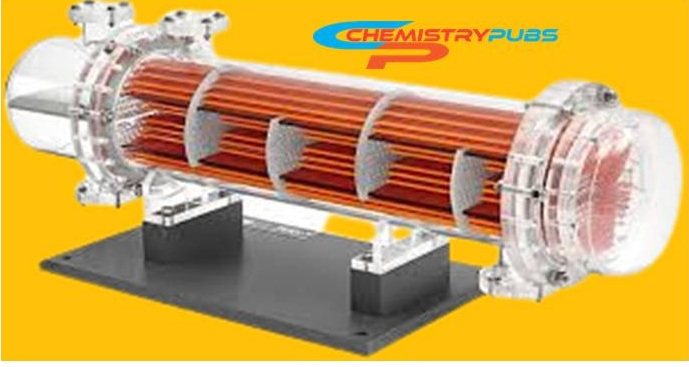The heat exchanger is one kind of process instrument that transfers heat between fluids without mixing or blending them. The sample fluids are generally separated by a wall that has high thermal conductivity. The thickness of this equipment wall is made in such a way that it prevents the mixing of the fluids or the possibility of direct contact between them. The process area of the heat exchanger rejects or absorbs heat from the liquid being processed. Then the cooling or heating fluid stream is produced by this process. This process involves the use of convection in fluids and thermal conduction.
The wall of this equipment is made of steel or aluminum tube which has high thermal conductivity. The types of heat exchangers are different from fuel, electrical, or nuclear-powered heat transfer equipment.
This process instrument is very much needed for food, bioprocessing, pharmaceutical, and chemical manufacturing, where the heating or cooling step is the final or intermediate step for preparing the fluids for further processing. This is suitable for sterilizing microorganisms in food and pharmaceutical products.

Heat Exchanger Types
There exist Various types of this equipment based on the fluid’s flow directions such as parallel-flow, counter-flow, and cross-flow types which discussions are given below:
Counter-flow Arrangements: Fluids enter this type of heat exchanger at opposing ends, travel in opposite directions, and emit at opposite ends in counter-flow heat exchangers.
Cross-flow Arrangements: Fluids flow in this type of equipment at the cross-flow arrangement. Heat can be exchanged easily in all directions in this instrument and the fluid can mix with each other in an unfinned exchanger.
Parallel flow Arrangements: Two fluids are moving easily in the same direction in this type of equipment. The two fluids of different densities can either be separated by solid walls or tubes in this arrangement for preventing them from mixing or can be in direct contact with each other.
Heat exchangers can also be divided into some categories which discussion are given below:
Double Pipe Heat Exchanger: This is a cost-effective heat exchanger based on its design and maintenance, making them an excellent choice for small business purposes. One fluid can move easily within the tube while the other moves outside in this type of heat exchanger. It requires a large amount of space to run this heat exchanger.
Shell and Tube Heat Exchanger: This type is very popular and widely used in the industry, with a variety of structural variations. It is very suitable for high-pressure applications of more than 30 bar and temperatures greater than 260°C.
Plate Heat Exchanger: Two metal plates are used for transferring heat between low-velocity liquids in this type of equipment. An internal combustion engine is used for running this type of heat exchanger with engine coolant passing through radiator coils as air passes through the coils. Heat can be exchanged easily by this type of heat exchanger for lower to medium-pressure fluids.
Principle of Heat Exchanger
The principle of this equipment is based on the transfer of heat between two fluids. Thermal energy can be transferred by close contact with each other but is prevented from mixing by a physical barrier. Heat transfer is occurred between the fluids without applying any thermal energy by contacting each other. Generally, the heat transfer mechanism involves a combination of both conduction and convection processes.
Heat can be transferred by this equipment based on the temperature difference between the inlet and outlet temperatures minus the inlet and outlet temperature of the process stream. There is an optimal approach temperature for every type of heat exchanger. The conduction process occurs in the heat exchanger by transferring heat energy by direct collisions of adjacent molecules on the wall separating the two fluids. Thermal energy is exchanged easily for the bulk motion of the fluid against the surface of the wall by the convection process.
Applications of Heat Exchanger
This process equipment is very suitable for transferring thermal energy in different industries. It is very important to run the process in the sugar refinery industry, crude oil refinery industry, and various chemical refinery industries. Many food items can be condensed by this equipment. It requires the removal of heat from the function of processes in the food, beverages, and pharmaceutical industry.
It helps to reduce or eliminate microbial to make products safe for consumption and to prevent spoilage. This important process device is suitable during a variety of processing stages, including filling, drying, and concentration.
This equipment helps with the exact combination of temperature and holding time, for precise pasteurization and ultra-high temperature treatment and regeneration in a variety of applications such as ultra-high temperature sterilization, milk and cheese milk pasteurization, beverage and energy drink pasteurization, standard and pulpy juice pasteurization, liquid egg processing, bottled water treatment, soups, sauces, and starch heating, ketchup and mustard heating and cooling.
References
Shah, R. K., & Sekulic, D. P. (2003). Fundamentals of heat exchanger design. John Wiley & Sons.

